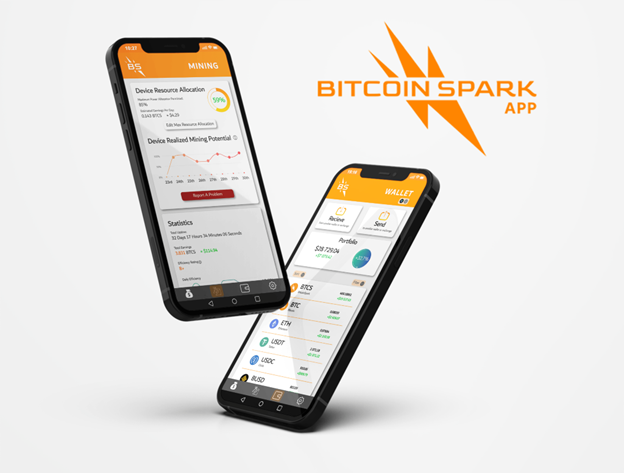Ethereum has long been favored by investors. However, recent data suggests investors are moving to Bitcoin Spark (BTCS), Shiba Inu (SHIB), and Terra Luna (LUNC).
ETH price prediction
Ether (ETH) is the native cryptocurrency of the Ethereum blockchain. On September 11th, the ETH price dropped below $1,600 to levels last seen in March. The sharp drop coincided with a development identified by Santiment, an analytics platform specializing in on-chain and social metrics. Santiment observed a substantial increase in the movement of ETH tokens that had previously been dormant in older wallets over a span of three months, as indicated by their Age Consumed on-chain metric. The surge in activity among long-dormant ETH holders suggested a trend of decreasing mean token age, a phenomenon typically associated with capitulation in the market. Such a decrease in mean age alongside falling prices is often interpreted as a sign of investor sentiment reaching a low point.
Shiba Inu (SHIB)
Shibarium, Shiba Inu’s layer-2 network, has achieved a notable transaction milestone, surpassing 2 million transactions and supporting over 1.1 million wallet addresses. However, the Shiba Inu (SHIB) price remains subdued.
Terra Luna (LUNC)
LUNC has recently witnessed a significant surge in trading volumes after the Terra Luna Classic community voted on a proposal for the v2.2.1 core upgrade by developer L1 Task Force. The upgrade introduces features such as cosmos SDK, tender mint migration to CometBFT, and IBC-go to v6 while implementing key earlier changes, including splitting the burn tax to the distribution module.
Bitcoin Spark (BTCS)
The Bitcoin Spark Initial Coin Offering (ICO) has seen massive investments, surpassing the $1 million mark just a month after its start. Bitcoin Spark is getting the attention of crypto investors and enthusiasts because of its novel approach. The project seeks to build on the vision of Satoshi Nakamoto to bring forth a new era of cryptocurrency. That said, Bitcoin Spark does have similarities with Bitcoin (BTC), such as a limited supply of 21 million.
Bitcoin Spark offers fast and cost-efficient transaction processing owing to its enhanced individual block transaction capacity, low block time, and substantially high number of nodes. It also provides a scalable and diverse platform for building smart contracts and decentralized applications (DApps) with its multi-layered system, which includes a smart contract layer that allows for the use of a myriad of programming languages.
Additionally, Bitcoin Spark solves the crypto mining juggernauts. It uses a novel consensus mechanism known as the Proof-of-Process (PoP), which combines elements of Proof-of-Work (PoW) and Proof-of-Stake (PoS). The PoP rewards miners for confirming blocks and contributing processing power to the network. However, the PoP is combined with an algorithm that exponentially decreases the rewards per additional processing power to ensure a more equitable distribution. This, together with the network’s massive nodes, enables even those with low-powered devices to mine BTCS. The project’s team will launch an application that allows Windows, Android, Linux, Mac OS, and iOS users to mine by installing it and permitting access to the processing unit. The app will create a virtual working environment isolated from the device’s operating system functions to ensure security. It will also adjust itself to the resources it can use on the device, accounting for overheating, battery, and concurrent usage needs. This greatly reduces the work and power consumption required for mining.

The miners’ contributed processing power will be rented out to organizations or individuals seeking remote computational power. This ensures the power used in network validation has actual use in the real world. Those using the network for this service will pay with BTCS, which will be sent to the mining pool. The BTCS minting rewards run on an elastic system based on the revenue generated within the Bitcoin Spark network, among other factors. If more revenue is generated, the BTCS minting is reduced equivalently, and the minting endpoint moves further.
With the ability for unlimited devices to provide processing power to Bitcoin Spark, it could become a self-sustaining revenue network that allows its participants to remain profitable with a limited supply constantly.
Bitcoin Spark is currently in Phase 5 of its ICO, selling BTCS at $2.50 and offering a 9% bonus, with investors expecting a continuous rise to a $10 launch price.
For more on Bitcoin Spark:
Website: https://bitcoinspark.org/
Buy BTCS: https://network.bitcoinspark.org/register
Disclaimer: This is a paid release. The statements, views and opinions expressed in this column are solely those of the content provider and do not necessarily represent those of NewsBTC. NewsBTC does not guarantee the accuracy or timeliness of information available in such content. Do your research and invest at your own risk.














